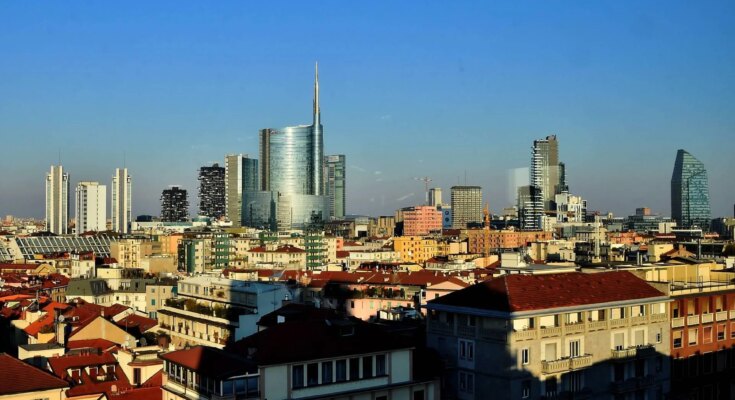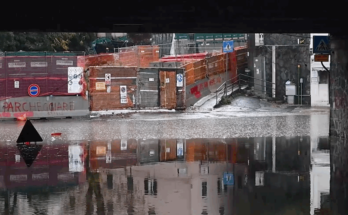Milan once again takes first place, with outstanding results in service provision, income, infrastructure management, vitality of the productive fabric, followed by Bolzano and Bologna, in the 2025 annual survey of the quality of life in the Italian provinces, carried out by ItaliaOggi and Ital Communications, in collaboration with the Sapienza University of Rome, now in its 27th edition. Compared to last year’s ranking, this is confirmation for Milan and Bolzano, while Bologna improved, moving up one position. However, it’s two steps back for Monza and Brianza, while there has been significant progress in the rankings for Rimini and Ascoli Piceno, in 12th and 15th place respectively, with more than twenty positions up compared to 2024. Still at the bottom of the rankings is Caltanissetta (107th), preceded by Crotone (106th), which has dropped five places in a year and Reggio Calabria (105th), which has gained a place instead. Of negative note are Foggia, who rose from 93rd to 104th, Pordenone from 9th to 23rd and Gorizia from 26th to 52nd.
The study is divided into nine dimensions of analysis: business and employment, environment, education and training, population, crime and safety, income and wealth, social security, health system, tourism, entertainment and culture, which allows us to investigate in depth various aspects related to the quality of life at the local level. The 107 provinces of Italy have been classified into 5 groups (Mediterranean, Francigena, Adriatic, Padania, Metropoli), thus obtaining a more detailed picture of their regional specificities. Quality of life in 2025 is good or fair in 60 of 107 provinces. This value is lower than the value recorded in recent years and therefore indicates worsening conditions. The survey also confirms in 2025 the existence of a rift between North-Central Italy and southern Italy and the islands. In addition, in Southern Italy there are still many areas experiencing social and personal difficulties. The quality of life in the North-West provinces decreased slightly (19 out of 25 provinces fell into the top two groups – good and acceptable quality – 2 less than in the previous edition). The opposite situation occurred in the North East, while in central Italy there was a slight improvement. For the southern Italian provinces and islands, only L’Aquila was classified in group 2 (acceptable quality of life), compared with two groups (Pescara and Teramo) surveyed last year.
The ‘Business and Jobs’ dimension indicator reports information on the job market, the business world, the number of protests per resident, and the number of startups and innovative SMEs appearing. Bolzano was in first place as in the previous three editions, followed by Florence (which was in fourth place) and rose 16 positions compared to last year. Followed by Prato, Padua and Trento. At the bottom of the ranking we only find the provinces of southern Italy and the islands: Agrigento, Syracuse and Naples.
The environmental dimension is divided into two sub-dimensions: the sub-dimension that is negatively related to quality of life includes environmental impact indicators, while the positive sub-dimension also includes variables whose performance can be linked to local government actions. Bolzano is still at the top: the environmental quality ranking opens, followed by Bologna, Bergamo and Reggio Emilia. In the top 19 positions there are 6 provinces from the North West; The 12 provinces of the North East and Macerata represent central Italy. Palermo and Catania are also confirmed to be in the queue in 2025.
Regarding crime and security, Ascoli Piceno opens the ranking, rising ten positions compared to last year. Followed in sequence by Oristano, Potenza, Matera and Treviso. Analysis of the results found in this and previous editions indicates substantial stability of the safety framework. In fact, this year too, the provinces with a good or acceptable level of safety totaled 65 provinces, the same number as the last seven editions of the survey, so the results are stable over time and very positive. In the queue we find Rome, Trieste, Florence and, finally, Milan.
In 2025, 5 of the 12 indicators divided into social security dimensions have been replaced. Data relating to NEET (the percentage of young people aged between 15 and 29 years who are not in education or training or the world of work) has been added. Instead of the 4 omitted indicators, we find: road homicides per 100 road accidents, deaths from alcohol abuse per 100 thousand population, deaths from drug abuse per 100 thousand population and, lastly, the prison density index. The province that opened this year’s ranking was Ascoli Piceno, followed by Lodi, Prato, Siena and Ragusa, while Southern Sardinia was closed.
There are 6 indicators of the Education and training dimension: participation rate in kindergarten, percentage of population aged between 25 and 64 years who have an upper secondary education diploma, percentage of population aged between 25 and 39 years with a degree or other qualification, percentage of population aged between 25 and 64 years who are engaged in lifelong learning activities, and percentage of students who have adequate numerical and alphabetic skills. Bologna opened its rankings by confirming the placings of the last two editions of the survey. Followed by Milan, two provinces in the North East, Udine and Trieste, and Ascoli Piceno which represents central Italy. Caltanissetta and, finally, once again, Crotone closed the chances.
The dimensional structure of this analysis undergoes major changes in 2022, with the removal of population density; replacing the average number of family members with the average number of children per woman; inclusion of 5 new indicators. Bolzano established itself in first place, a result that has been repeated for eleven years now. Trento, Brescia, Monza and Brianza as well as Milan are then included in the leading group. In last place are Southern Sardinia and Oristano. Starting in 2025, in addition to the sub-dimensions of beds in specialist departments and provision of large quantities of diagnostic equipment, a sub-dimension of hospital activity indicators is also included, which seeks to capture the impact of extra-regional hospital mobility on the provincial hospital system and its attractiveness. Ancona opened the rankings, up from third place achieved last year, followed by Catanzaro, Siena, Pisa and Verona. The province of Southern Sardinia closed the rankings, dropping one position.
In the new dimension of tourism, entertainment and culture, the ranking is opened by Bolzano, followed by Trieste, Rimini, Rome and Livorno. The leading group includes 17 provinces, compared with 14 provinces surveyed last year. Among them are Milan, Imperia, Verona, Venice, Gorizia, Ravenna and Forlì-Cesena, Florence, Grosseto, Lucca. Enna closed the rankings. Starting from the present survey, marital wealth per capita has been replaced by real estate value (positive sub-dimension), and a new significant indicator has been included, represented by the cost per square meter of renting residential property. Milan opened the ranking by confirming the results obtained in the last five editions. Following the leading group we find Bolzano, Florence, Monza and Brianza and Bologna. Closing the ranking, like the previous six editions, is the province of Crotone.
According to Marino Longoni, Co-Director of ItaliaOggi: “The 2025 survey ranking compiled by ItaliaOggi and Ital Communications confirms a trend that has been observed in the past: large cities, especially in the North-Central region, show a strong capacity for resilience and adaptation to the emergencies of recent years. Unfortunately, the gap between the North-Central and South is becoming more pronounced, with increasingly clear signs of social and personal difficulties emerging. Milan, for two years, remains in a difficult position. top position in the ranking and, despite extremely negative results for safety indicators it maintains its leadership”.
Attilio Lombardi, Founder of Ital Communications, stated: “The survey that Ital Communications carried out, together with ItaliaOggi and in collaboration with Sapienza University of Rome, in 2025 in 107 Italian provinces, analyzing dimensions such as employment, social security, environment, education, justice, health, allows us to have a broad and detailed picture of the level of quality of life. Important signals emerge, useful for evaluating critical and urgent issues, but also positive aspects and growth. The Our commitment and our role, as communicators, is to encourage good communication, which is a fundamental element for citizens’ ability to participate in collective decision-making: it is a way to facilitate concrete dialogue within communities, useful for the development of their respective territories”.
For Alessandro Polli, professor of Economic Statistics and Time Series Analysis at La Sapienza University of Rome: “The survey on quality of life – now in its 27th edition – is one of the most comprehensive studies available in Italy. It is divided into nine dimensions and 97 indicators allowing for an in-depth analysis of the local context. This year’s edition confirms three trends: the growing rift between the north-central region, which is more resilient, and the south, which is increasingly vulnerable; the existence of a wide area of social pressure in the south, difficult to be overcome within the current framework of public finances; and the consolidation of the primacy of the provinces and metropolitan cities of the north-central region, which even in the current economic and geopolitical phase show the greatest capacity for resistance”.



